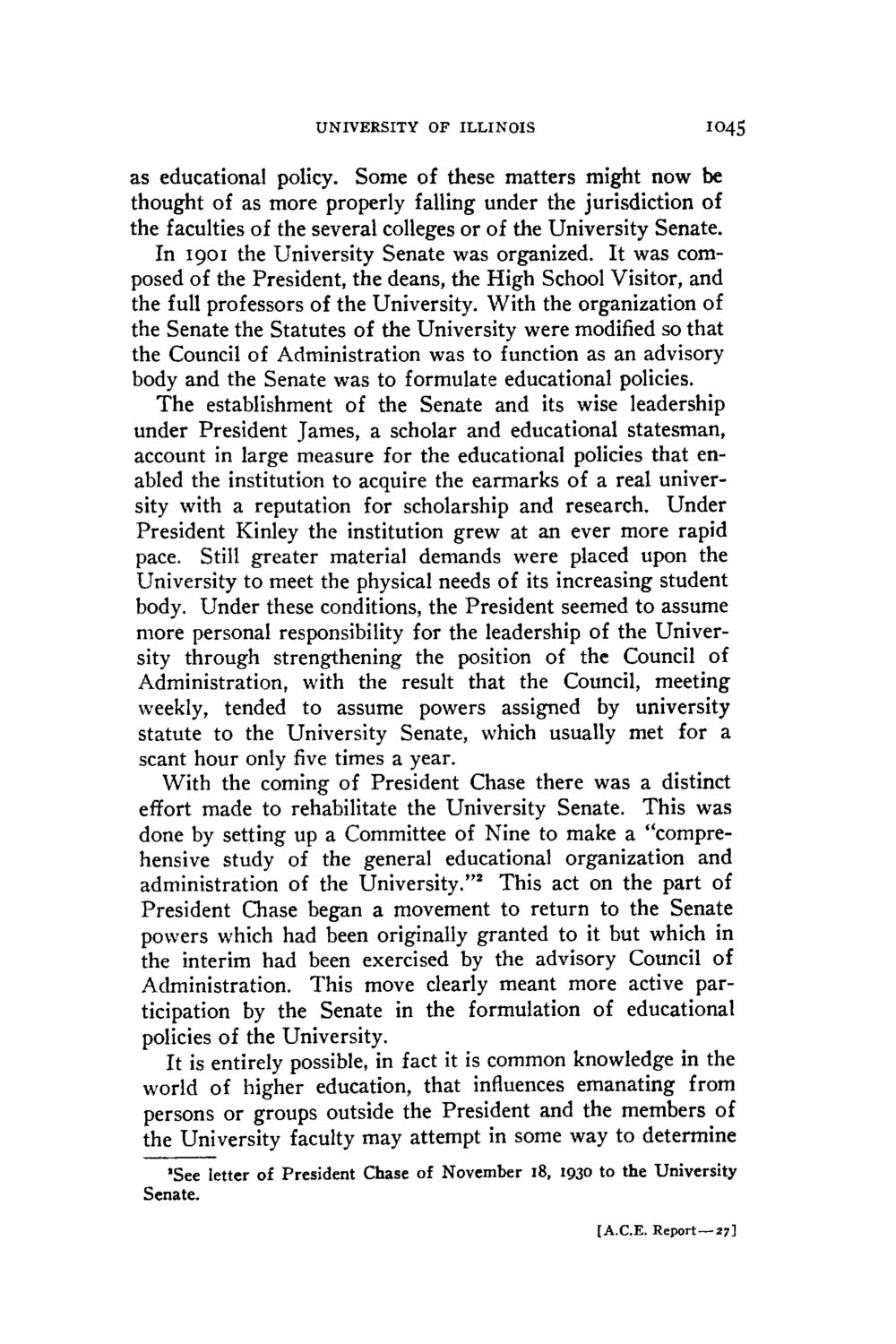| |
| |
Caption: Board of Trustees Minutes - 1944
This is a reduced-resolution page image for fast online browsing.

EXTRACTED TEXT FROM PAGE:
UNIVERSITY OF ILLINOIS I<H5 as educational policy. Some of these matters might now be thought of as more properly falling under the jurisdiction of the faculties of the several colleges or of the University Senate. In 1901 the University Senate was organized. It was composed of the President, the deans, the High School Visitor, and the full professors of the University. With the organization of the Senate the Statutes of the University were modified so that the Council of Administration was to function as an advisory body and the Senate was to formulate educational policies. The establishment of the Senate and its wise leadership under President James, a scholar and educational statesman, account in large measure for the educational policies that enabled the institution to acquire the earmarks of a real university with a reputation for scholarship and research. Under President Kinley the institution grew at an ever more rapid pace. Still greater material demands were placed upon the University to meet the physical needs of its increasing student body. Under these conditions, the President seemed to assume more personal responsibility for the leadership of the University through strengthening the position of the Council of Administration, with the result that the Council, meeting weekly, tended to assume powers assigned by university statute to the University Senate, which usually met for a scant hour only five times a year. With the coming of President Chase there was a distinct effort made to rehabilitate the University Senate. This was done by setting up a Committee of Nine to make a "comprehensive study of the general educational organization and administration of the University."2 This act on the part of President Chase began a movement to return to the Senate powers which had been originally granted to it but which in the interim had been exercised by the advisory Council of Administration. This move clearly meant more active participation by the Senate in the formulation of educational policies of the University. It is entirely possible, in fact it is common knowledge in the world of higher education, that influences emanating from persons or groups outside the President and the members of the University faculty may attempt in some way to determine 'See letter of President Chase of November 18, 1930 to the University Senate. [A.C.E. Report —27]
| |